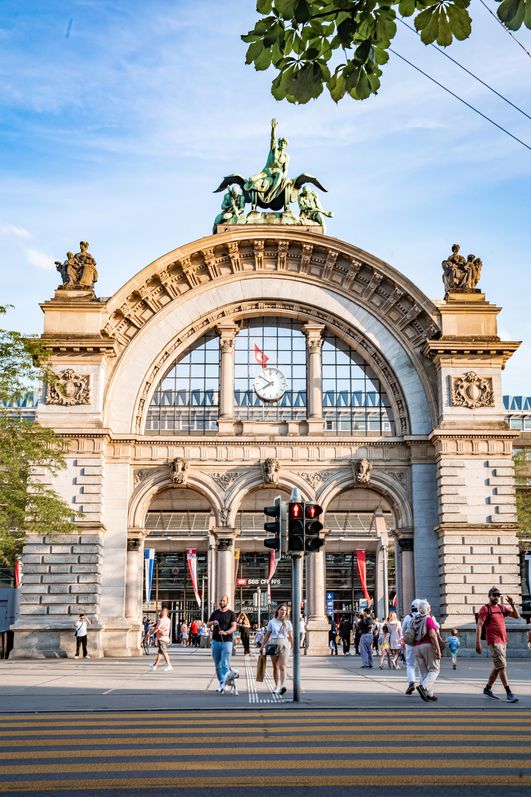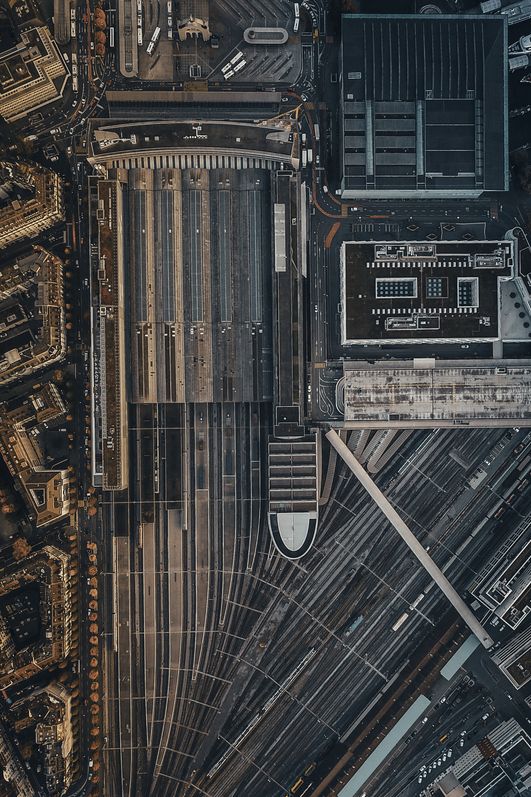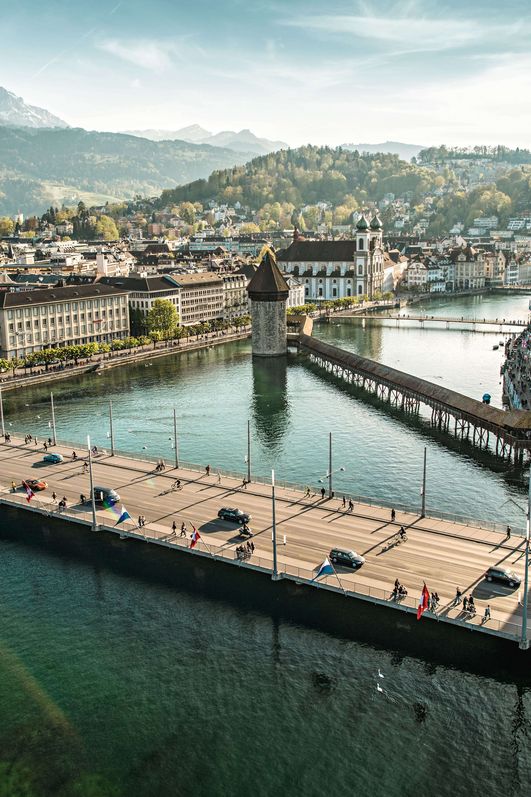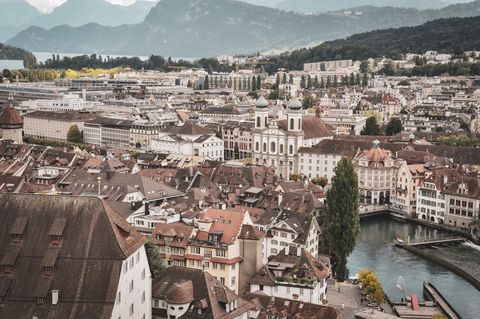The railway terminus you see today was inaugurated in 1991 and is the latest of three in what has been an eventful history.
The first mainline terminus was constructed in timber by the Swiss Central Railway Company and completed in 1856. The line led to Lucerne from France and Germany via Basel and Olten in Switzerland. Passengers approached the station via what is today Pilatusstrasse. Designed as a terminus, it occupied a lakeside location next to the landing stages of the Lake Lucerne Navigation Company.













